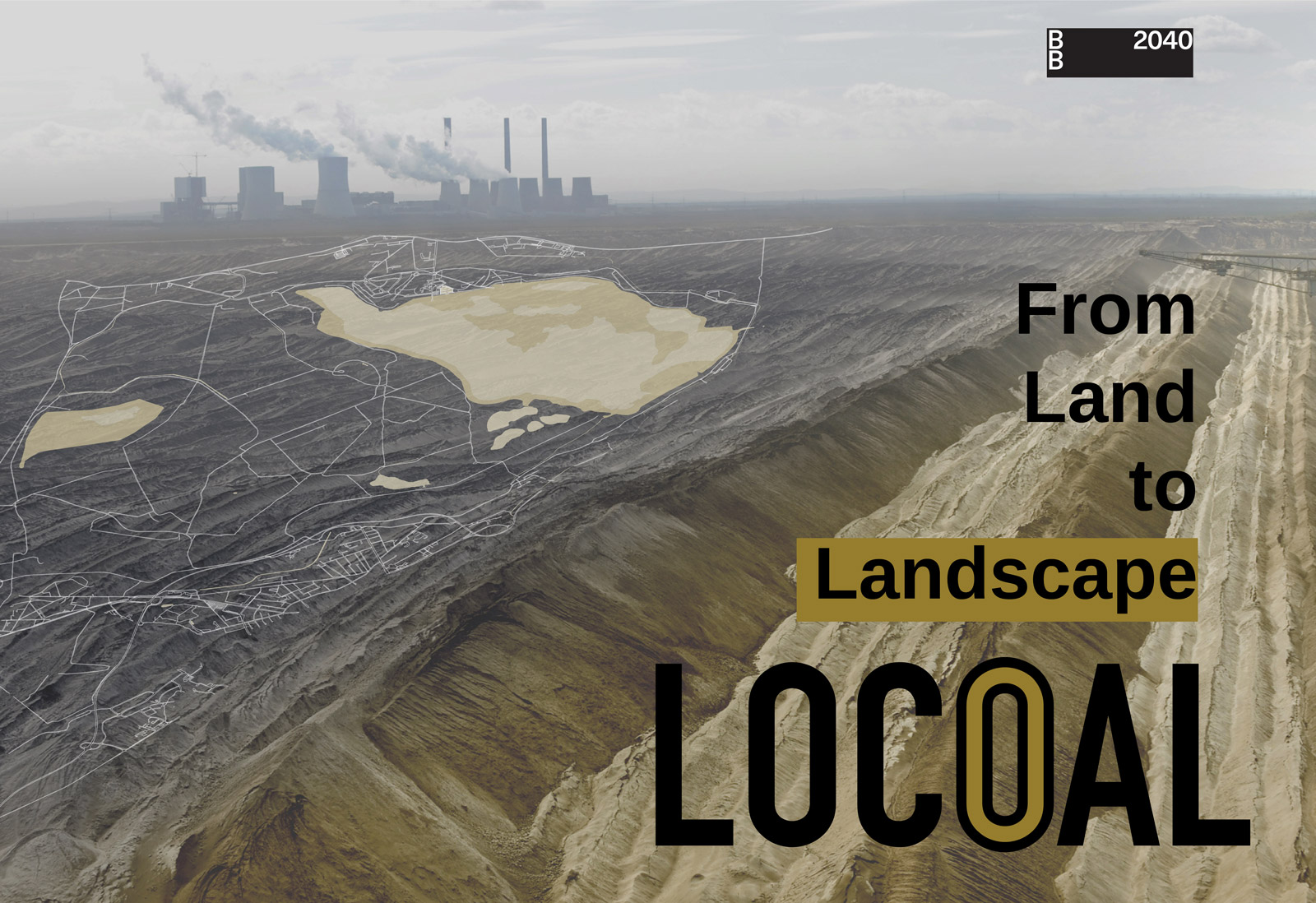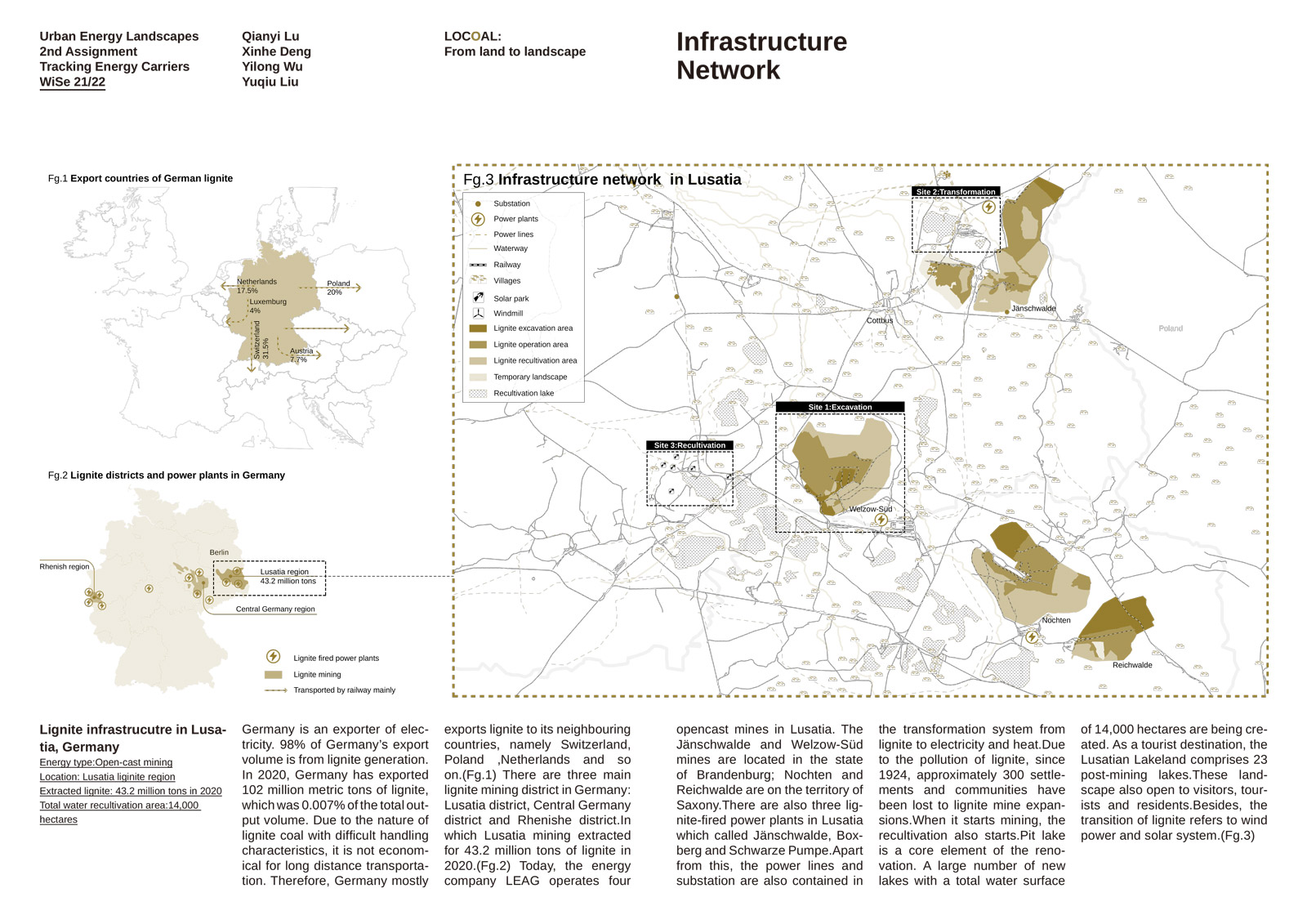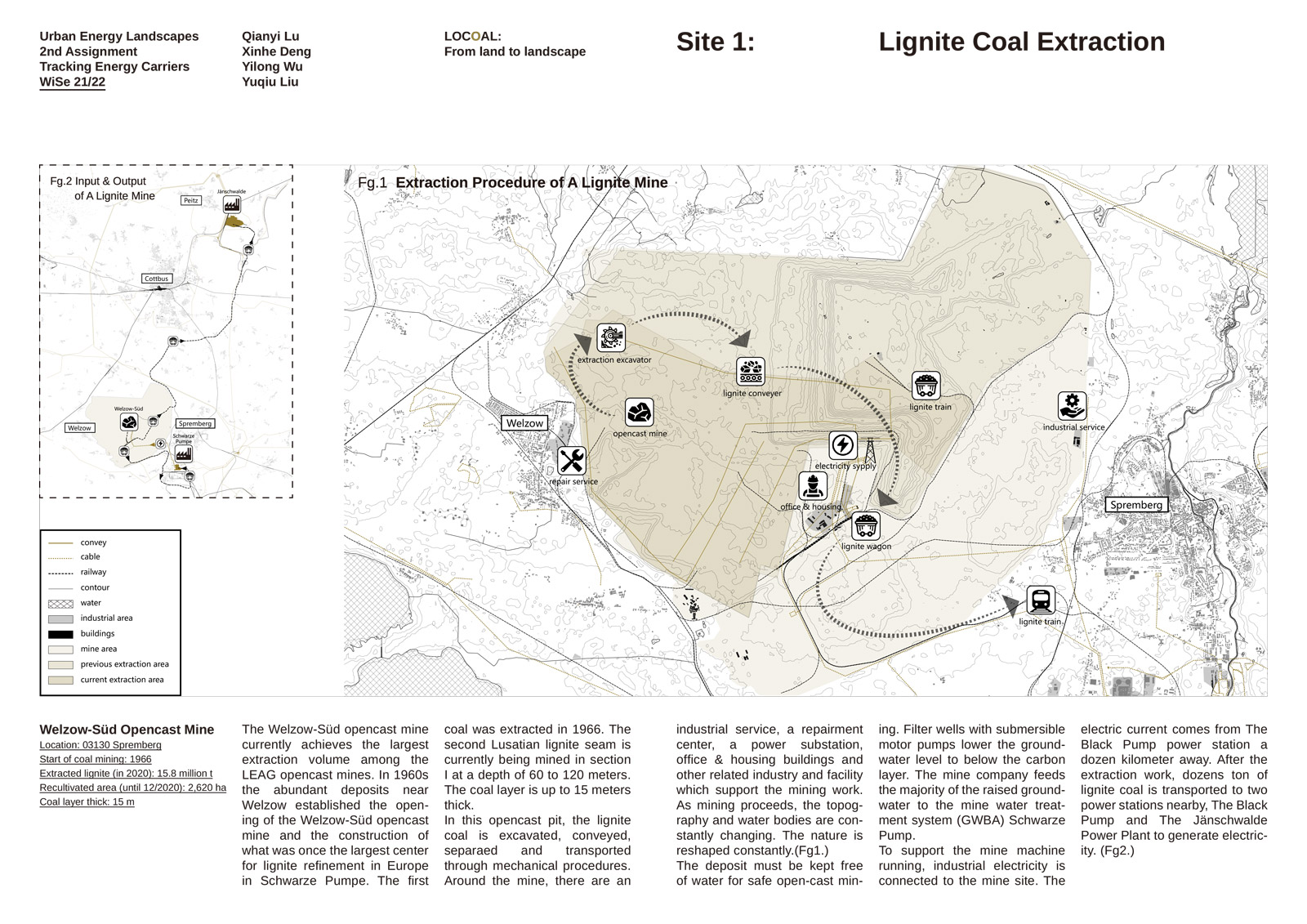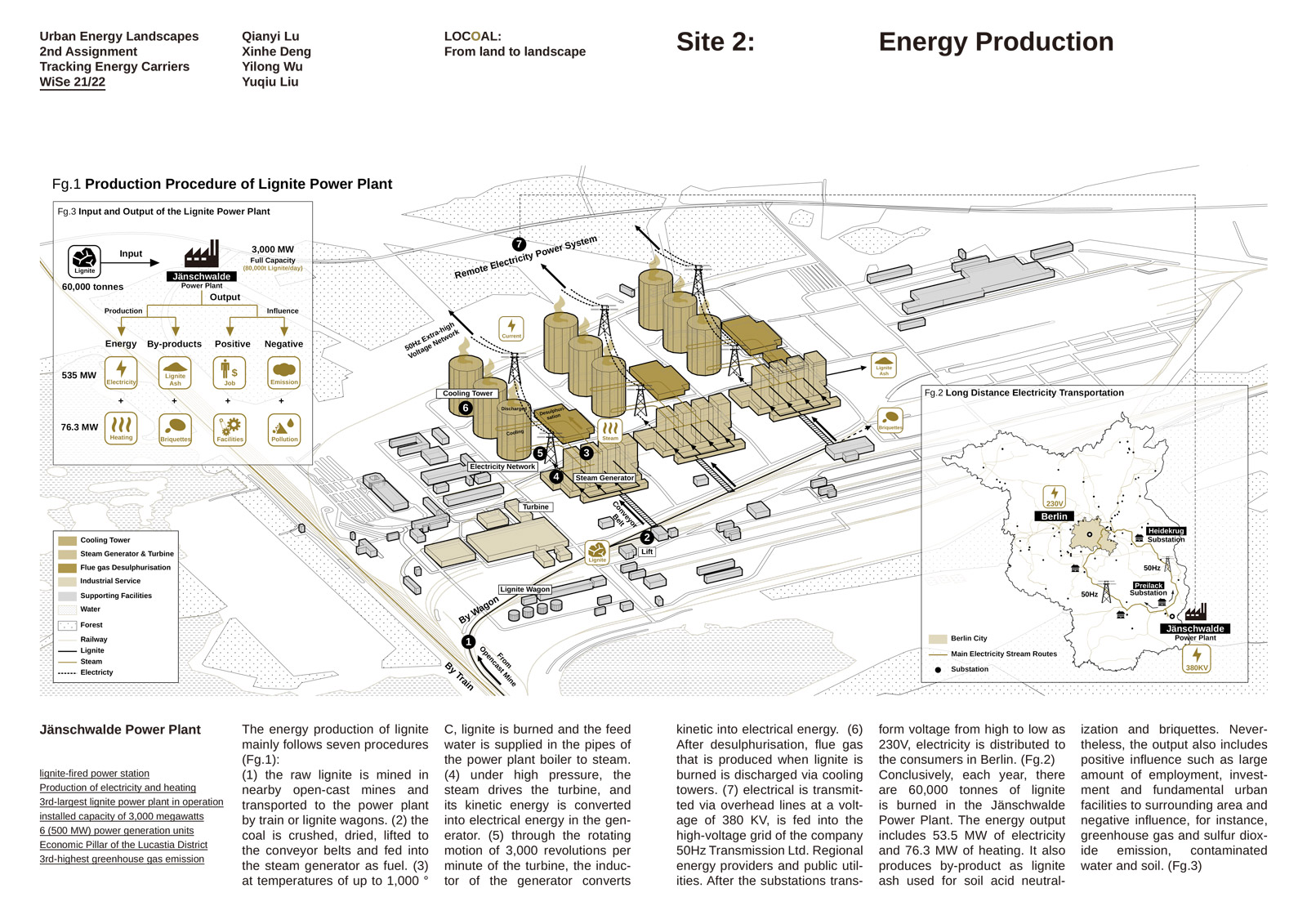Urban Energy Landscapes
Tracing
Uranium&Lignite
By: Joanna von Essen, Jeppe Kalnæs, Joseph Smithard, Lilian Volpert & Jana Wechtenbruch
Qianyi Lu, Xinhe Deng, Yilong Wu & Yuqiu Liu
Studio: WS 2022
“Urban Energy Landscapes”
Prof. Dr. Elke Beyer
David Bauer
Rosa Pintos Hanhausen
Support by:
Katerina Marečková
Ludwig Thanhäuser
Veit Vogel
Habitat Unit
Like the production of many materials and products, the energy carrier and fuel industry is organized within global and trans-local networks. Connected through complex infrastructural assemblages, dispersed sites, and areas of resource procurement, energy production, and consumption blend into the circulation of material and immaterial commodities from the urban to the planetary scale. This has massive impacts on urbanization processes and the urban form, creating splintered landscapes, still fostering beaten colonial pathways of socio-spatial inequality. Today, mainly based on a mineral economy of extraction, energy resources are so valuable and essential to the globalized society that attempts to change historical dependencies and production pipelines are contested on many sides. Getting an overview of them will be vital in understanding our current state of affairs and difficulties in the road ahead.
The exercise will request each group to explore and trace material flows of selected energy carriers into Berlin/Brandenburg through given case studies. Through this, you will be able to render operating modes and organization of commodity circuits and their (trans-)local interplay with urban developments and territories. Zoom-ins will enable investigation and representation of the spaces, territories, infrastructures, and architecture. Groups are provided with A3-templates representing (A) carrier description & production network, (B) infrastructure network, (C) three pages for three example sites along the supply chain.
The midterm review will be held on the 17.12.21 with our guests
Prof. Hannah Le Roux (Wits University Johannesburg), Prof. Daniel Irurah (Wits University Johannesburg) & Dr. Kim Förster (School of Architecture, Manchester).
Lignite
Our group research focus on lignite industry in Lusatia region of Germany. Ever since the first mining operation in Lusatia in eighteen forty four lignite has long been Germany's traditional fossil fuel, while Germany has been the largest lignite producer in the world up till now. However, lignite industry sector is standing at a crossroad with latest policy indicating that all lignite industry shall be phased out by twenty thirty.
BB2040
[EN] Berlin Brandenburg 2040 was initiated by the Habitat Unit in cooperation with Projekte International and provides an open stage and platform for multiple contributions of departments and students of the Technical University Berlin and beyond. The project is funded by the Robert Bosch Foundation.
[DE] Berlin Brandenburg 2040 wurde initiiert von der Habitat Unit in Kooperation mit Projekte International und bietet eine offene Plattform für Beiträge von Fachgebieten und Studierenden der Technischen Universität Berlin und darüberhinaus. Das Projekt wird von der Robert Bosch Stiftung gefördert.













